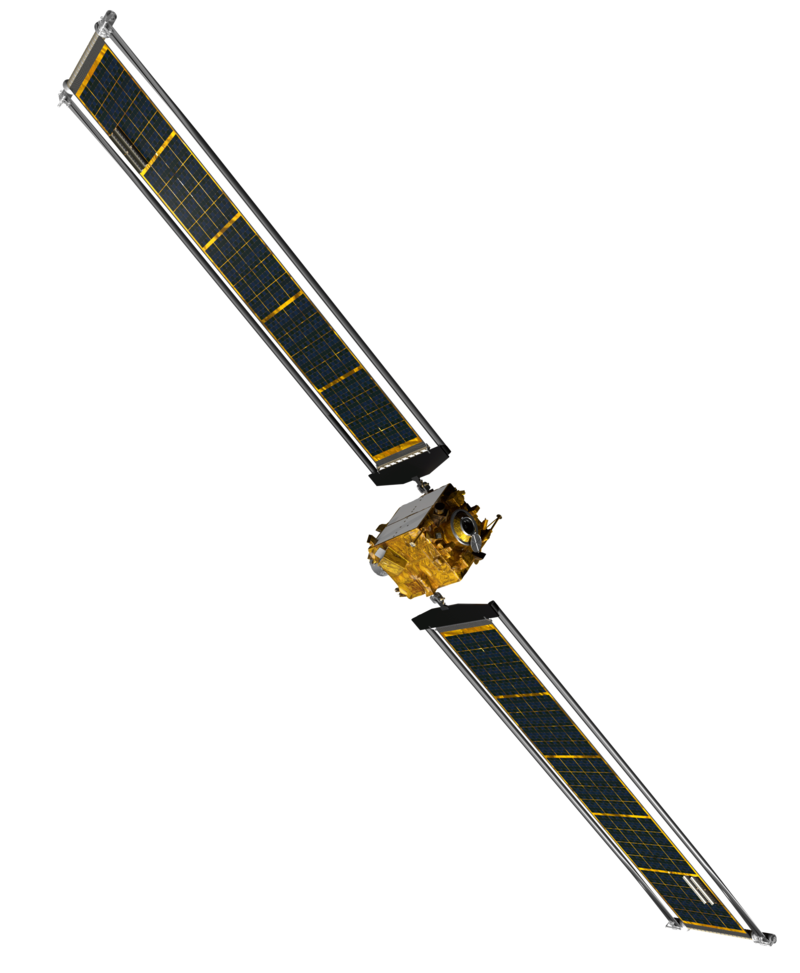THE SOUTHWORTH PLANETARIUM
70 Falmouth Street Portland, Maine 04103
(207) 780-4249 usm.maine.edu/planet
43.6667° N 70.2667° W
Altitude: 10 feet below sea level
Founded January 1970
2021-2022: XLVI
"The more we study the more we discover our ignorance."
-Percy Bysshe Shelley
THE DAILY ASTRONOMER
Tuesday, November 23, 2021
Asteroid Crash
or
Dart on Dimorphos
________________________
We're off on an undeserved Thanksgiving holiday
after today. We'll post a quiz on Friday and then return for what should be* a full week of DA's starting Monday.
A very happy Thanksgiving to you all!
_________________________
The scenario is quite a familiar one: a menacing, 100-mile wide asteroid careens inexorably toward the third world and the forecast models range from damn to dire. An impact will not only annihilate all structures and life forms within a 1000 square miles of ground zero, but the explosion -more powerful than the combined detonation of humanity's entire nuclear arsenal- promises to set the world afire and cast multiple megatons of displaced debris into the atmosphere. The protracted obscuration of sunlight will precipitate a five-year long "nuclear winter," freezing most of the globe and condemning 95% of all species, including those smug humans, to extinction. Of course, some creatures will persist and eventually evolve into a highly advanced, predominant race of beings who will thrive, prosper and cheerfully exploit Earth's abundant resources secure in knowledge that the planet was made solely for their convenience, amusement and gratification.
A sleep-disturbing terror indeed.
Although Hollywood has capitalized richly on this doomsday scenario, the prospect of an asteroid impact is all too real. After all, Earth has sustained myriad impacts over its nearly five billion year history, some of which were so powerful as to precipitate a mass extinction. While the asteroid population has diminished somewhat since the solar system's infancy, millions of those outer space rocks continue to tumble through the gulfs of interplanetary space. Some of them, the Aten and Apollo asteroids, even cross Earth's orbit! Eventually, something will hit us hard and Earth life will change forever.
Then again, unlike the helpless dinosaurs, we humans have developed the sinister science of astronomy. Many of its practitioners have cataloged and tracked thousands upon thousands of these asteroids and they are paying particular attention to the potentially hazardous ones, dubbed PHA's. While some of the smaller rocks continue to elude detection, asteroid-watching astronomers are confident that no major impact is imminent. Consequently, we're all sleeping quite soundly at our desks, thank you very much. However, what would we do if astronomers detected an asteroid that was destined to hit our planet?
That problem is the cardinal concern of NASA's Planetary Defense Team (yes, there is such an organization.) Their aim is to devise ways to prevent any destructive impact, from city-withering strikes to those comparable to the assault that propelled the dinosaurs into the ages. What ways have they devised?
Well, while pulverizing the errant projectile with nuclear weapons works brilliantly on the silver screen, that solution is quite problematic in the real world for a whole host of reasons, not least of which relates to the thousands of chunks produced by the explosion. A more reasonable solution involves diverting any incoming asteroid with a bit of a "push." The theory is that such a perturbation could alter an asteroid's trajectory enough to cause it to miss our planet entirely. We don't need to "blow the asteroid up." Instead, we just need to swat it away and leave us alone.
Yet, is that even possible?
NASA scientists certainly hope so and this week they are launching a spacecraft named DART (Double Asteroid Redirection Test) which is destined to crash on the smaller asteroid within a binary asteroid system. Weighing 500 kg (1,100 lb), the golf-cart sized vessel is scheduled to crash onto Dimorphos, a "moon" of the asteroid Didymos. Approximately 520 feet in diameter, Dimorphos is about the size of the Great Pyramid in Giza. Planetary scientists involved in this mission estimate that the impact of DART onto Dimorphos at 4.1 miles per second will induce an initial velocity change on Dimorphos equalling 0.4 millmeters per second. That meager speed alteration should result in a significant path change over a long period of time. If the calculations are correct, the DART impact will alter Dimorphos speed by half a millimeter per second, thereby changing its orbital period by ten minutes. In a few years after the impact, the Hera spacecraft, still under construction, will visit the Didymos system to verify the orbital alteration.
The DART craft will launch tomorrow and, after a six million mile journey,should crash onto Dimorphos on October 2, 2022. NASA scientists hasten to assure us all that this binary asteroid is no threat to Earth. Moreover, the orbital path change induced by DART will not re-direct it on a collision course with Earth (as funny as that would be.) The only aim is to test the asteroid redirection impact theory: to determine if the calculations are correct.

DART
To subscribe or unsubscribe from the Daily Astronomer:
We know that our planet might one day be imperiled by a large asteroid capable of wrecking widespread destruction. We also know that such an asteroid will be much larger than the minuscule Dimorphos. However, the DART mission represents the next stage in the complex process of developing an effective planetary defense system, one that might literally save the world someday.
Our hopes and thoughts are with you, DART!
*Yes, I know...
To subscribe or unsubscribe from the Daily Astronomer: